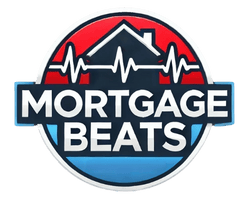Defining Primary Residence Loans
A primary residence loan represents a mortgage specifically designed for financing a home where the borrower will live most of the year. These loans enjoy preferential treatment in the mortgage market because lenders view them as lower-risk compared to investment properties or vacation homes. The distinguishing feature of these loans centers on the borrower’s intention to occupy the property as their main dwelling, creating a stronger incentive to maintain payments even during financial challenges. This occupancy commitment translates to more favorable terms for qualified buyers.
Primary residence loans form the backbone of the housing market, enabling millions of families to achieve homeownership each year. They come in various forms including conventional mortgages, government-backed options like FHA and VA loans, and specialized first-time homebuyer programs. Each variation serves different borrower needs while maintaining the core requirement that the financed property will serve as the homeowner’s principal residence. This classification affects everything from interest rates to qualification standards and available loan features.
At NorCal Real Estate & Financial Service, we help borrowers navigate the nuances of primary residence financing. Our mortgage professionals explain how these loans differ from other mortgage products and help clients determine which specific program best matches their homeownership goals and financial situation. We’ve guided countless buyers through the process of securing optimal financing for their primary homes.
Key Characteristics That Differentiate These Loans
Primary residence loans offer several distinct advantages that set them apart from other mortgage types. Most notably, they typically feature lower interest rates, sometimes as much as 0.5% to 1% less than loans for investment properties. Lenders price this discount because owner-occupied homes historically demonstrate lower default rates, as borrowers prioritize keeping a roof over their family’s head. The reduced rates create significant long-term savings, often amounting to tens of thousands of dollars over the loan’s duration.
These loans also generally have more flexible qualification standards compared to non-owner-occupied financing. Lenders may accept lower credit scores, higher debt-to-income ratios, and smaller down payments for primary residences. Many government-backed programs specifically target primary home buyers, offering features like reduced mortgage insurance requirements or more lenient underwriting guidelines. The combination of better rates and more accessible qualification makes these loans the preferred choice for those purchasing homes to live in rather than as investments.
We help clients at NorCal Real Estate & Financial Service understand and leverage these advantageous characteristics. Our advisors compare multiple loan options to identify which offers the best combination of favorable terms and affordable payments for each borrower’s primary residence purchase. This personalized approach helps buyers secure financing that aligns with both their immediate needs and long-term financial plans.
Occupancy Requirements and Verification
Lenders take primary residence status seriously and implement specific requirements to verify borrowers will actually occupy the home. Most programs mandate that buyers move into the property within 60 days of closing and use it as their main residence for the majority of the year. This typically means living in the home at least six months plus one day annually, though some lenders may require longer occupancy periods. Violating these requirements could trigger loan default provisions, making honest intentions crucial.
To enforce these rules, lenders employ several verification methods. Borrowers must sign occupancy affidavits at closing, legally affirming their intent to make the property their primary home. Some lenders conduct follow-up checks, especially for loans with special first-time homebuyer benefits. These might include mailed questionnaires or even occasional property visits to confirm continued occupancy. Certain loan programs impose waiting periods before owners can convert the property to rental use, typically ranging from one to five years depending on the mortgage type.
Our team at NorCal Real Estate & Financial Service ensures clients fully understand these occupancy obligations before committing to primary residence financing. We explain how different loan programs handle occupancy requirements and help buyers evaluate whether their plans align with these rules. For those considering future property use changes, we outline strategies to maintain compliance or transition to different financing when appropriate.
Financial Benefits Compared to Other Loan Types
The financial advantages of primary residence loans extend beyond just lower interest rates. These mortgages often feature reduced fees, including lower origination charges and discounted mortgage insurance premiums compared to investment property loans. Many programs allow smaller down payments, with some government-backed options accepting as little as 3% down for qualified buyers. This combination of favorable terms makes homeownership more accessible to a broader range of potential buyers.
Another significant benefit involves the availability of specialized assistance programs exclusively for primary residences. These include down payment assistance grants, closing cost help, and special financing for targeted professions like teachers or healthcare workers. Some local governments offer additional incentives like tax abatements or discounted interest rates for buyers purchasing primary homes in designated revitalization areas. These layered benefits can substantially reduce both upfront and ongoing housing costs.
We help clients at NorCal Real Estate & Financial Service identify and combine these financial benefits strategically. Our comprehensive approach considers all available programs and incentives to maximize savings on primary residence purchases. Many buyers are pleasantly surprised to learn about assistance options they didn’t know existed, making their homeownership dreams more achievable than they imagined.
Common Primary Residence Loan Programs
The mortgage market offers several specialized programs catering to primary residence buyers. Conventional loans backed by Fannie Mae and Freddie Mac represent the most common option, offering competitive terms for borrowers with good credit. Government-backed FHA loans provide more flexible qualification standards, making them popular with first-time buyers and those with limited down payments. VA loans offer exceptional benefits for military borrowers, including no down payment requirements and limited closing costs.
Other noteworthy programs include USDA loans for rural homebuyers, energy-efficient mortgages that finance green home improvements, and various state-specific first-time homebuyer initiatives. Each program carries unique features tailored to different borrower needs, but all share the common requirement that the financed property serve as the purchaser’s primary residence. Understanding these options helps buyers select the optimal financing path for their situation.
Our mortgage professionals at NorCal Real Estate & Financial Service maintain expertise across all major primary residence loan programs. We evaluate each client’s complete financial picture to recommend the best available options, often identifying programs borrowers didn’t know existed. This guidance proves particularly valuable for first-time buyers navigating the complex mortgage landscape for the first time.
Credit and Income Requirements
Primary residence loans generally feature more accommodating credit standards than other mortgage types. While conventional loans typically require minimum FICO scores around 620, some government-backed programs may accept scores as low as 580 with compensating factors. The best interest rates usually go to borrowers with scores above 740, but the tiered pricing structure allows many buyers with fair credit to still qualify, albeit at slightly higher rates.
Income verification follows similarly flexible patterns for primary residences. Traditional employees typically need to provide recent pay stubs and W-2s, while self-employed borrowers may qualify with just one year of tax returns under some programs instead of the standard two. Lenders also show more willingness to consider non-traditional income sources like part-time work, bonuses, or even certain public assistance benefits when evaluating primary residence applications.
At NorCal Real Estate & Financial Service, we help clients present their credit and income profiles in the most favorable light. Our advisors know which lenders offer the most flexible underwriting for different situations and can recommend credit improvement strategies to help borrowers qualify for better terms. This personalized approach has helped many clients secure primary residence financing even with challenging financial backgrounds.
Down Payment Options and Assistance
Down payment requirements for primary residence loans vary significantly by program, creating opportunities for buyers with limited savings. Conventional loans may require as little as 3% down for first-time buyers, while FHA loans mandate 3.5% minimum down payments. VA and USDA programs allow 100% financing for qualified applicants, eliminating the down payment hurdle entirely. These reduced requirements make homeownership achievable for many who couldn’t save the traditional 20% down payment.
Numerous down payment assistance programs further reduce cash requirements for primary residence purchases. These include forgivable grants, low-interest second mortgages, and matched savings programs specifically designed to help buyers overcome the down payment obstacle. Many state housing finance agencies offer special programs combining affordable first mortgages with down payment help for eligible borrowers. Some employers and labor unions also provide housing assistance as an employee benefit.
We maintain comprehensive knowledge of these assistance options at NorCal Real Estate & Financial Service. Our mortgage consultants help clients navigate the sometimes complex application processes for these programs, ensuring they maximize available benefits. Many buyers discover they qualify for assistance that substantially reduces their upfront costs, making homeownership possible sooner than they anticipated.
Tax Advantages of Primary Residence Financing
Primary residence loans provide several valuable tax benefits that enhance their financial appeal. Mortgage interest deductions allow homeowners to reduce taxable income by the amount of interest paid each year, within certain limits. Property taxes also remain deductible for primary homes, providing additional savings. These benefits can significantly lower the after-tax cost of homeownership compared to renting or owning investment properties.
Capital gains treatment represents another major advantage for primary residences. When selling, homeowners can exclude up to $250,000 ($500,000 for married couples) of capital gains from taxation if they’ve lived in the home as their primary residence for at least two of the previous five years. This exclusion can save tens of thousands in taxes compared to investment property sales, where all gains are typically taxable.
Our financial advisors at NorCal Real Estate & Financial Service help clients understand and maximize these tax advantages. We coordinate with tax professionals to ensure borrowers structure their primary residence financing in ways that optimize both mortgage terms and tax benefits. This holistic approach to home financing creates greater long-term value for our clients.
Refinancing Considerations for Primary Homes
Primary residence loans offer more refinancing options than other mortgage types, providing flexibility as financial needs change. Standard rate-and-term refinances allow homeowners to secure lower interest rates or adjust loan durations. Cash-out refinances enable tapping home equity while often enjoying better terms than home equity loans or lines of credit. Government-backed loans frequently offer streamlined refinancing options with reduced documentation requirements and no appraisal needs.
Special programs like HARP (now expired) and the current FHA Streamline Refinance demonstrate how primary residence refinancing can provide relief during challenging economic periods. These programs help homeowners reduce payments even with limited equity or credit challenges. The broader availability of refinancing options for primary residences gives owners valuable tools to manage their largest financial asset over time.
We assist clients at NorCal Real Estate & Financial Service in evaluating when and how to refinance their primary residence loans. Our advisors analyze current rates, loan terms, and individual financial situations to determine if refinancing makes sense. Many clients have saved substantially through our timely refinance recommendations as market conditions changed.
How Professional Guidance Enhances the Process
Navigating primary residence loan options benefits greatly from professional mortgage advice. Experienced loan officers understand how to match borrowers with optimal programs based on their unique financial situations and homeownership goals. They can identify qualifying factors borrowers might overlook and suggest strategies to improve loan terms. This expertise proves particularly valuable for first-time buyers or those with complex financial profiles.
Mortgage professionals also provide critical timing advice, helping borrowers lock rates at favorable moments and coordinate closings with real estate transactions. They serve as liaisons between buyers, real estate agents, underwriters, and title companies, ensuring smooth communication throughout the process. This coordination becomes especially important when facing tight deadlines or resolving last-minute issues before closing.
At NorCal Real Estate & Financial Service, we take pride in providing white-glove service for primary residence financing. Our consultants combine technical mortgage expertise with personalized attention to each client’s needs. From initial pre-approval to final closing, we guide borrowers through every step, explaining complex concepts in understandable terms while advocating for their best interests.
Conclusion
Primary residence loans serve as the foundation of sustainable homeownership, offering favorable terms that reflect the stability and importance of a family’s main dwelling. These specialized mortgage products make home buying more accessible and affordable through lower rates, flexible qualifications, and valuable tax benefits. Understanding how they differ from other financing options helps borrowers make informed decisions about one of life’s most significant financial commitments.
The mortgage professionals at NorCal Real Estate & Financial Service specialize in helping clients secure optimal primary residence financing. Our comprehensive approach considers all available programs, financial benefits, and long-term implications to match borrowers with loans that truly fit their needs. We’ve helped thousands of families navigate this important process successfully.
For those considering purchasing or refinancing a primary home, we invite you to contact our team for a consultation. Whether you’re a first-time buyer or experienced homeowner, our expertise can help you secure financing that supports both your current needs and future financial goals. Let us show you how our client-focused approach makes obtaining primary residence financing a smoother, more rewarding experience.
Ready To Get The Best Financial Advise, Email us at: Chris@mortgagebeats.com



